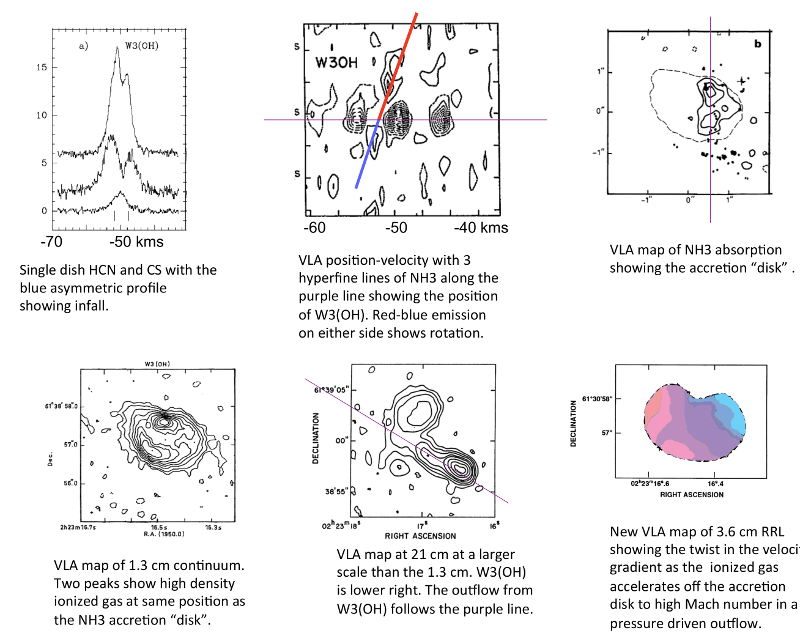| EPoS Contribution |
|
Comparing Accretion in Low and High Mass Star Formation
Eric Keto CfA, Cambridge, US | |
|
I will present new VLA observations of radio recombination
lines (RRL) H66a and H92a in the HII region W3(OH)
made at high enough spatial ( < 0.5") and spectral (~ 1 kms)
resolution to resolve the ionized gas flow around
this extremely young (still accreting) massive (O7) star.
A comparison with previously published molecular line
observations traces the star-forming accretion flow
from the scale of the collapsing molecular envelope,
through a rotationally-flattened molecular disk that penetrates
the HII region, and finally outward in a pressure-driven
ionized wind.
W3(OH) is the third HII region, along with W51e2 and G10.6-0.4 that we have observationally identified with this type of massive accretion flow. In contrast to our other two candidates which contain multiple O stars in their centers, W3(OH) may surround a single O7 star. The structures in these massive accretion flows, the collapsing envelope, the accretion disk, and the clearing outflow, are analogous to those responsible for the observational differences between the class 0, class I/II, and class III phases of low-mass star formation. However because of the short time scale for massive star formation, these structures that appear sequentially in low-mass star formation all appear at the same time in high mass. Second, each of the three structures is different in the two cases. In high-mass star formation, the protostellar envelopes can be connected to larger-scale inflows. The disks are too massive to be described by the thin-disk approximation, yet may still be Toomre stable as our new observations of IRAS20126 indicate. The ionized outflow that clears the surrounding envelope is continuously fed by the massive accretion flow rather than by the central star and its remnant accretion disk as in low-mass star formation. The question now is not whether high-mass star formation is a scaled-up version of low-mass, but exactly how different is it. | |
 | |
| Caption: A massive star-forming accretion flow in W3(OH) | |
|
Suggested Session:
From Low- to High-Mass Star Formation | |

